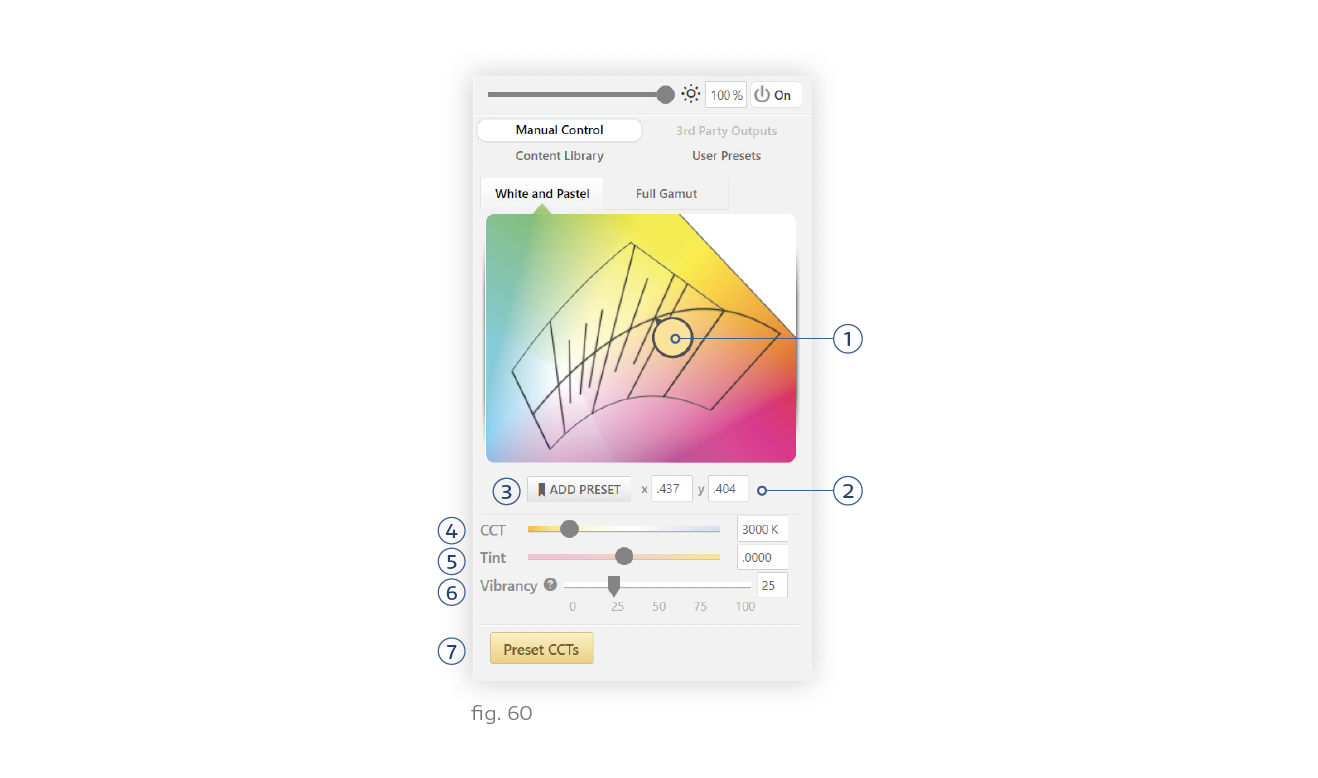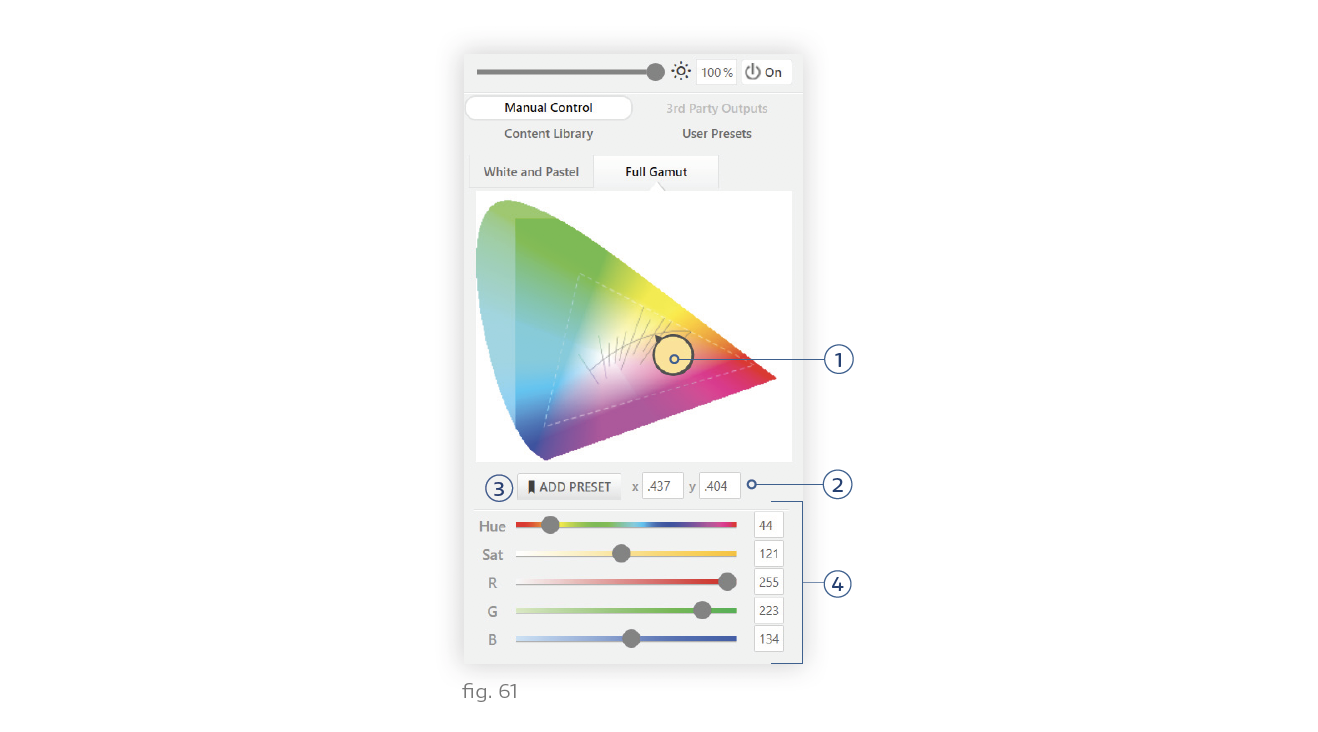In Manual Control, Design Studio presents a CIE 1931 color diagram from which you can select color coordinates. Having the ability to control color as well as intensity (using the intensity slider) gives you 3-dimensional control over your lighting’s color space.
White and Pastel
The White and Pastel tab, shown in fig. 60, lets you pick from the softer hues at the heart of a chromaticity diagram, which all Ketra lights can match with guaranteed accuracy. The curve at the center is the black body locus, representing the changing color of a theoretical black body radiator as its temperature increases in units of Kelvin.

In White and Pastel, you can:
1. Freely set specific color coordinates within a subset of Ketra’s available coordinates (all accessible in the Full Gamut tab). In order to match warm colors below 1700K, Design Studio may scale down your light’s intensity.
2. Enter exact x, y chromaticity coordinates.
3. Add user presets to save coordinates and settings.
4. Adjust the CCT (Correlated Color Temperature, the temperature corresponding to a given point along the locus) via a sliding scale that follows the shape of the locus, or select from preset CCTs.
5. Adjust your light’s tint via a sliding scale that follows the isotherms for a given CCT.
6. Adjust your light’s vibrancy via a sliding scale.
7. Select from a list of common CCTs.
Note: When vibrancy is closer to 100%, illuminated objects can appear more vibrant. To understand vibrancy, be aware that every Ketra emitter has 4 LEDs: red, blue, green, and white. When you adjust the vibrancy of your light, you change the ratio of RGB to W output: at closer to 100%, output is generated more by the RGB LEDs; at closer to 0%, it is generated more by the W LED. In either case, the color points and intensity are the same, while the SPD output and CRI change.
Full Gamut
The Full Gamut tab, shown in fig. 61, lets you select from Ketra’s extended gamut of color coordinates.

Note: For coordinates outside of the dashed triangle, and especially on the outer edges of the full gamut, you may notice some very slight variation in the color of your lights.
